What did you use to do during recess?
The monkey bars! They were my favorite. Though I think by 4th/5th grade I also passed many a recess walking laps around the big gravel field, chatting with friends.
(Photos by Poppi Photography)
How much time do you get to work on creative projects?
I am fortunate to work full time making picture books, though the number of hours I spend being creative on any given day varies depending on what part of the book process I am in, all the other demands of running a business from home, and the demands of parenting. During the last month leading up to a book deadline, my work days tend to be very long. Those are the weeks that my husband does all of the cooking and cleaning for our family, on top of working his own 10 hour day… I’m lucky to have his support and honestly not sure how I’d balance parenting and running a creative business without him.
How did motherhood change your creative practice?
It was difficult, in the beginning, to find time for creative work with an infant/toddler. But because of this, motherhood taught me that I could be much more flexible, in terms of my creative schedule, than I imagined.
Early on, I found myself taking a nap with my daughter when I put her to sleep at night, and then I would work until 1, 2 or sometimes even 3am. This was how I made my first book, THE BOOK OF MISTAKES. I’ve never been a night owl, so this isn’t something I thought I could do…and yet I did. It was a bit of a marvel and taught me that if you just get your bottom into a chair and lift your pen or brush to page, if you make a date with your art project and show up for it, it will be there for you.
I was also given some wonderful advice which served me well during those years… which was to always stop painting for the night when you have a strong idea of what you’re going to do next. Even if it is a small detail, like painting a pair of shoes red— stop there. This way, the next day when you come back to the painting, instead of facing a huge unknown, you can jump right back into painting those shoes red. And by the time you’re done with the shoes or buttons or clouds or boots…you usually have a new idea of what you want to paint next. This one trick made it so much easier, as a sleep deprived parent to a very young child, to stay in the flow.
How does art enrich your life? How does being a mother enrich your art?
Finding time to make art as a young mother was very challenging. But becoming a mother also opened my heart, in the most beautiful way. In a way that I hadn’t even known it was closed.
So, while I may not have made a lot of work when my daughter was very young, I think of that time as research years, during which I was collecting ideas and remembering how to see the world through the eyes of a young person. Then, when my daughter started school, I suddenly had so much more time to paint. It was glorious!
Also, the seed/idea for my first book (THE BOOK OF MISTAKES) is tied to an experience I had with my daughter. So, in a very tangible way, I have her to thank for my start in the book world. Which is to say — YES. Art enriches my life, being a mother enriches my life and my art. Even the difficult bits are like compost…they enrich.
Who would you love to collaborate with? What’s a dream project for you?
There are many! But a few dream book collaborators would be— Julie Fogliano, Kate DiCamillo,
and if he ever does another children’s book.(Corinna’s art cabinet, covered in quotes, including a few favorites below…)
“ Talent is insignificant. I knew a lot of talented ruins. Beyond talent lie all the usual words: discipline, love, luck but most of all, endurance.”
-James Baldwin
“Picture books are both what is in the world and what is possible in the world.”
-Kate Hoefler
“In that sense, you could see revision as a form of, an act of, love, It’s actually love in progress.”
-George Saunders
“We have been given this sacred task of making hearts large through story… we are working to make hearts that are capable of containing muchjoy and much sorrow, hearts capacious enough to contain the complexities and mysteries of ourselves and of each other.”
-Kate Di Camillo
What do you do when you feel burnt out or filled with doubt?
Surfing (and spending time by the ocean) replenishes me. Lately, because we live farther from the ocean than we used to, I also find great joy in my garden. Gardens, forests, oceans, rivers, lakes, the Salish Sea (any body of water, really)… these all remind me that the world is huge and full of possibility. Also, my two tabby cats are great at reminding me not to get too precious about a drawing on a drawing table (sometimes by walking all over said drawing).
What’s your favorite super easy creative practice to do when you’re looking for fresh ideas?
I love making what we call “Creature Drawings” with my daughter and husband. To begin, we each have a pen or pencil that is a different color. Then, we each draw a shape on a piece of paper— it can be any shape… a squiggle, something geometric, something fuzzy or prickly or wobbly. Next, you pass the drawing to your left and the next person gets to turn that shape into a creature. After a few minutes, you all pass that drawing along to your left again, and you keep going like this until all the drawings feel finished.
Then, whoever first drew the shape gives that creature a name and you share them. It's one of our favorite games to play while traveling or waiting— at a dentist’s office, restaurant, airport etc. I love how making it a creature (instead of a person or a specific animal) loosens everyone up, so there is no “wrong” way to approach it. Every added stroke or line is perfect, the way it is.
Corinna Luyken is the author-illustrator of ABC AND YOU AND ME; THE TREE IN ME (an NCTE Notable Poetry Book and Indie Bestseller); MY HEART (A New York Times Best Seller); and THE BOOK OF MISTAKES (which The Wall Street Journal called “sublime”). She is also the illustrator of IN THE DARK and NOTHING IN COMMON, both written by Kate Hoefler; PATCHWORK (A New York Times and Kirkus Best Picture Book of 2022), written by Matt de la Peña; SOMETHING GOOD and ADRIAN SIMCOX DOES NOT HAVE A HORSE, both written by Marcy Campbell; and WEIRD LITTLE ROBOTS, written by Carolyn Crimi.
Luyken’s work is rooted in improvisation and explores themes of connection, perception, and misperception. She is interested in stories that reframe and question our assumptions, and the role of art (and books) in changing how we see and understand the world around us. She was raised in Oregon, California, and Hawaii; and studied dance improvisation, poetry, and printmaking at Middlebury College in Vermont. She now lives in Western Washington, near the Salish Sea, with her husband and her 14 year old daughter. She also likes to dig in the dirt, surf, and read with a cat (or two) on her lap. You can see more of her work at www.corinnaluyken.com
If you enjoyed this post, please 💛 it so others can find it or share it with your favorite creative mothers.
PS—The fastest way to grow as a writer is to book a manuscript critique or a creative coaching session with an expert.
My clients get agents, sell books, and win awards. They also learn how to find ease and joy in the creative process, so they can keep going when life gets hard.





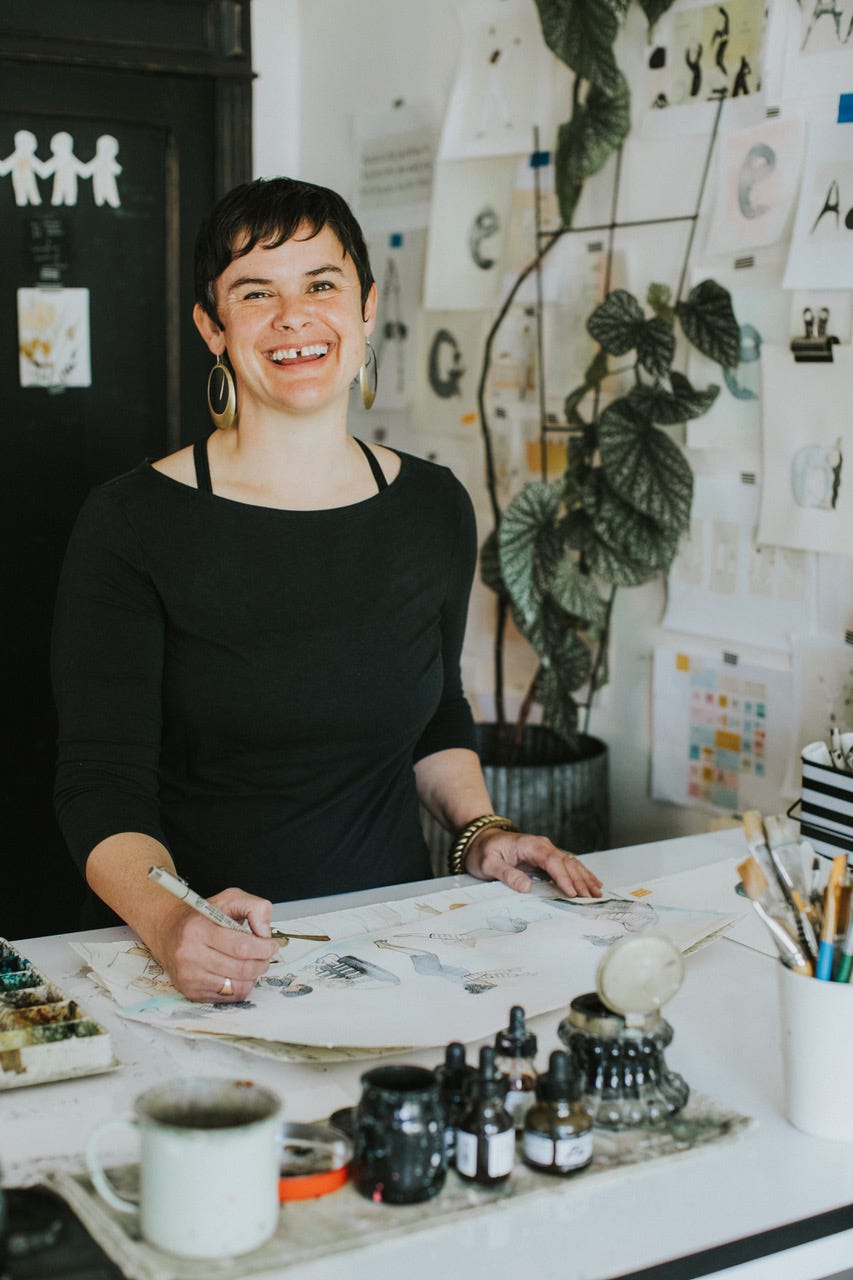
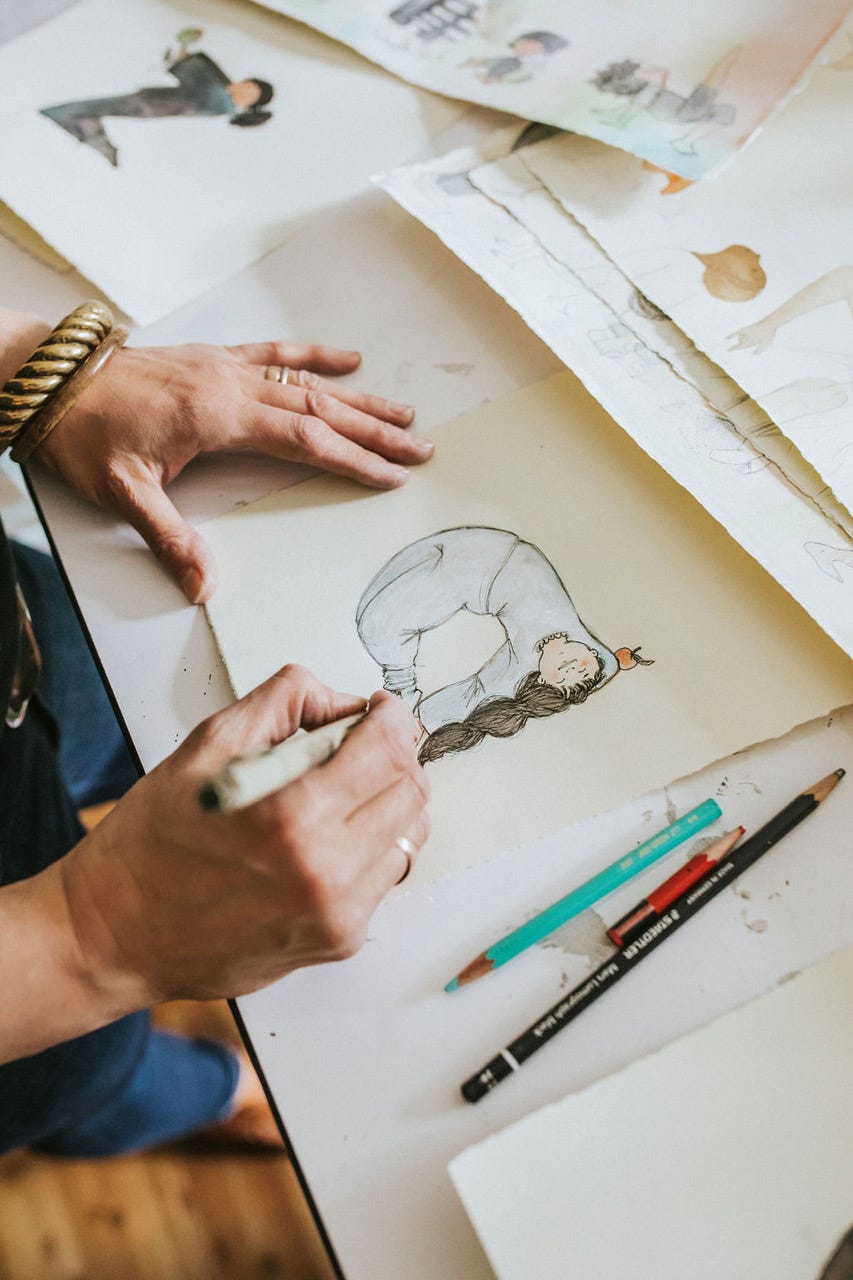

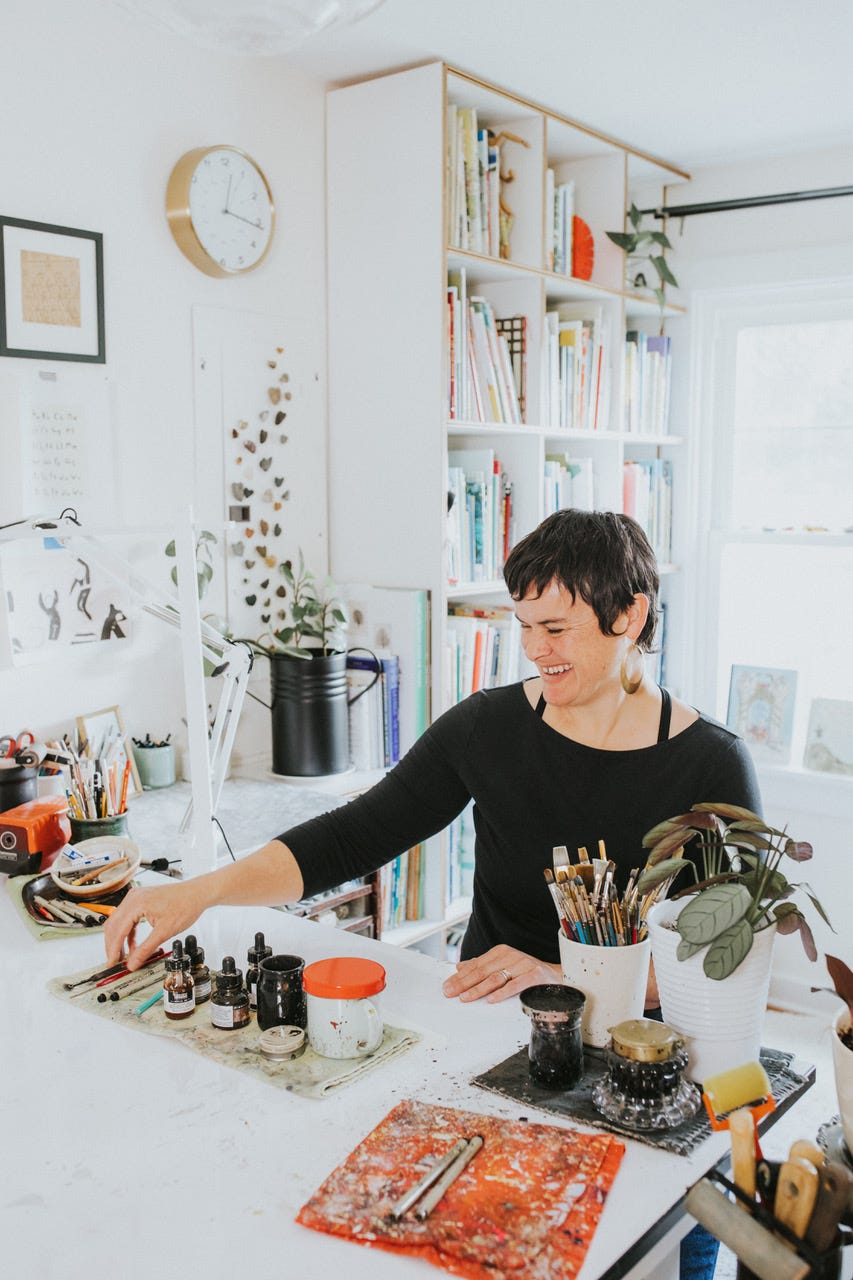
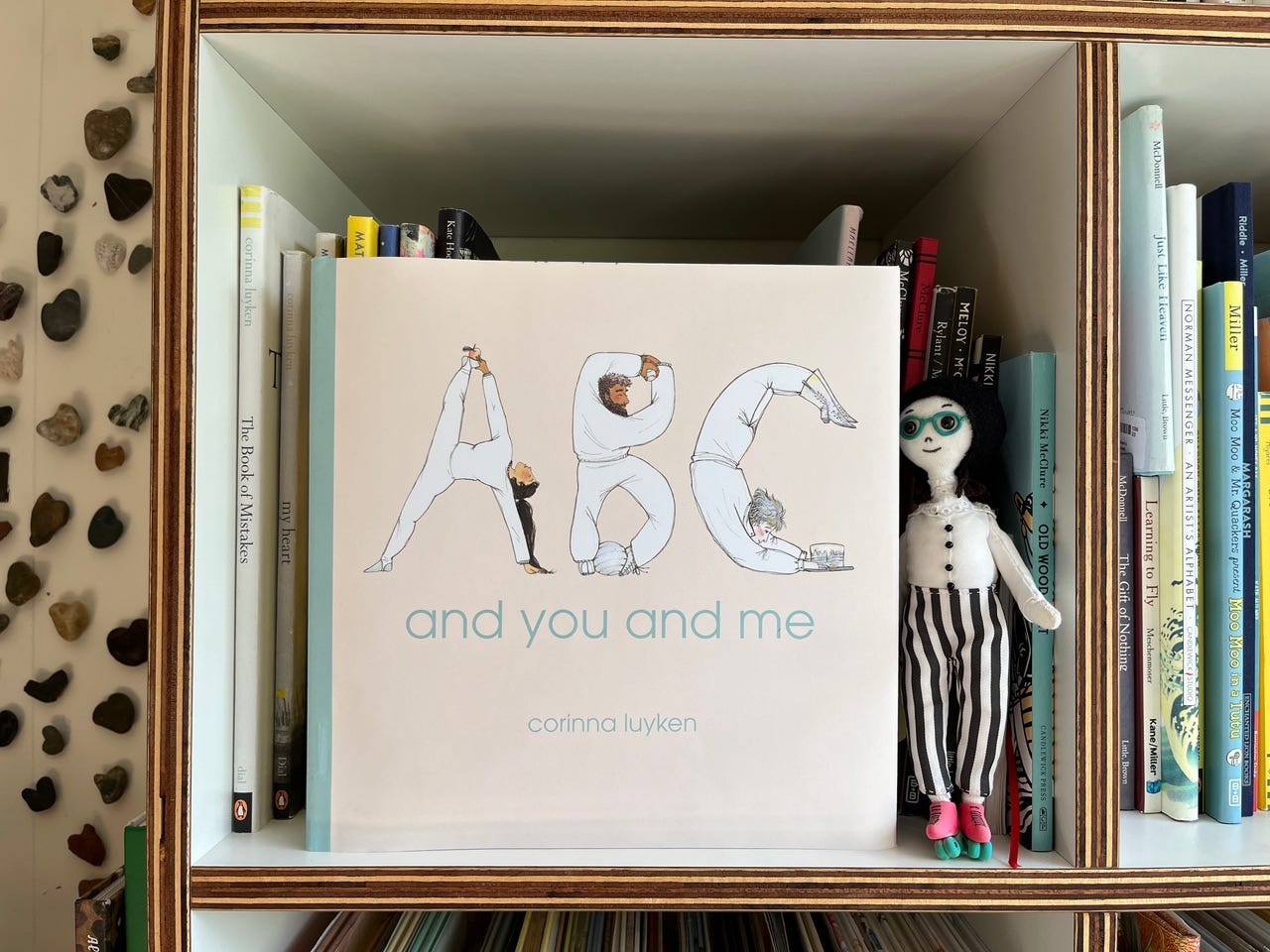
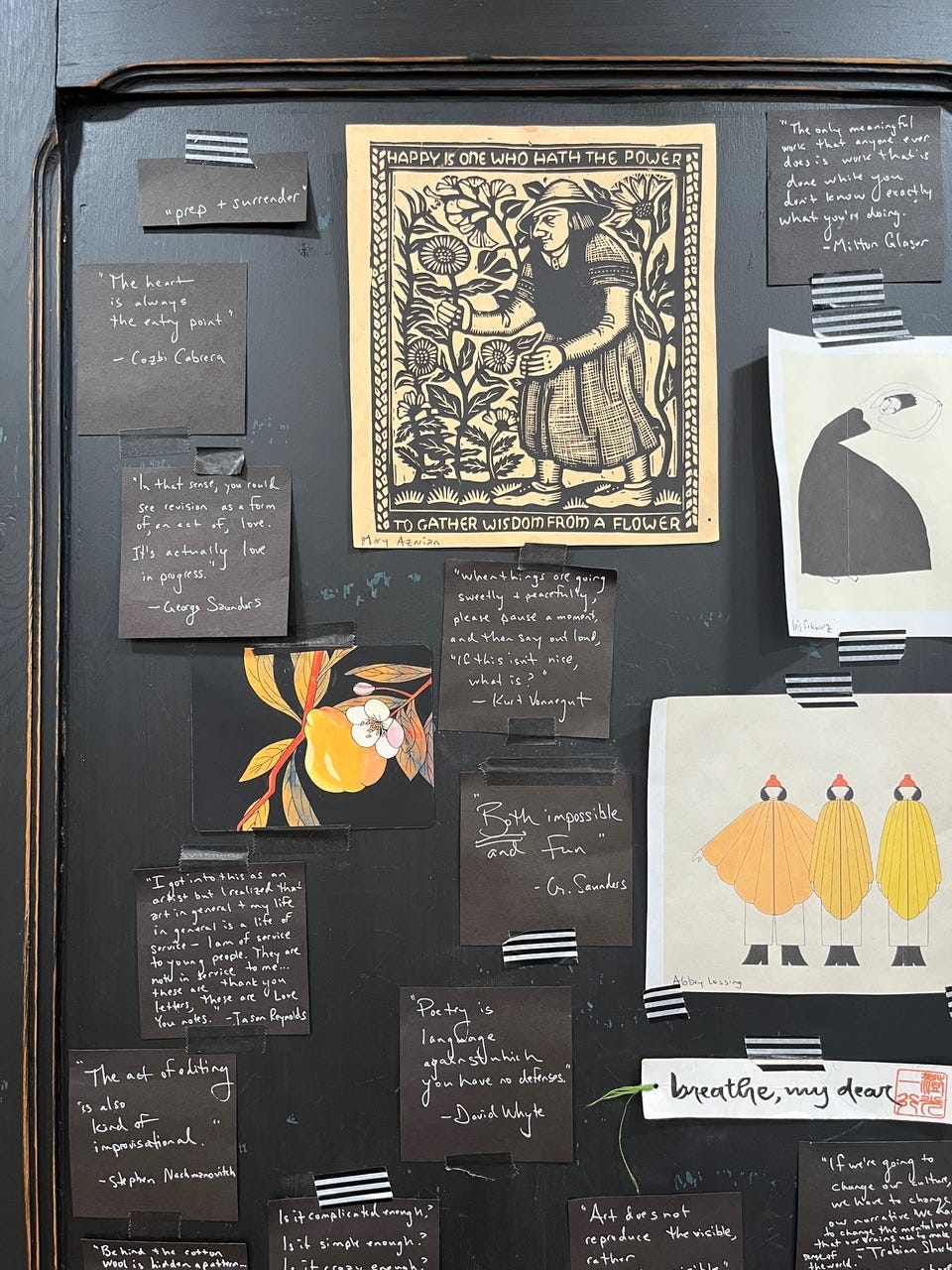
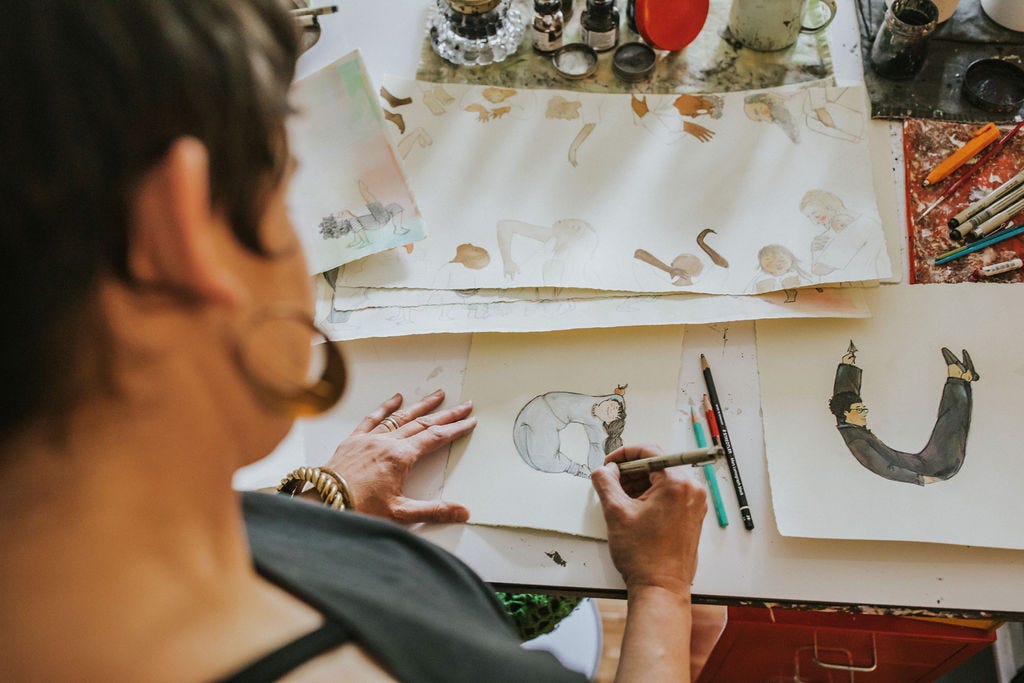
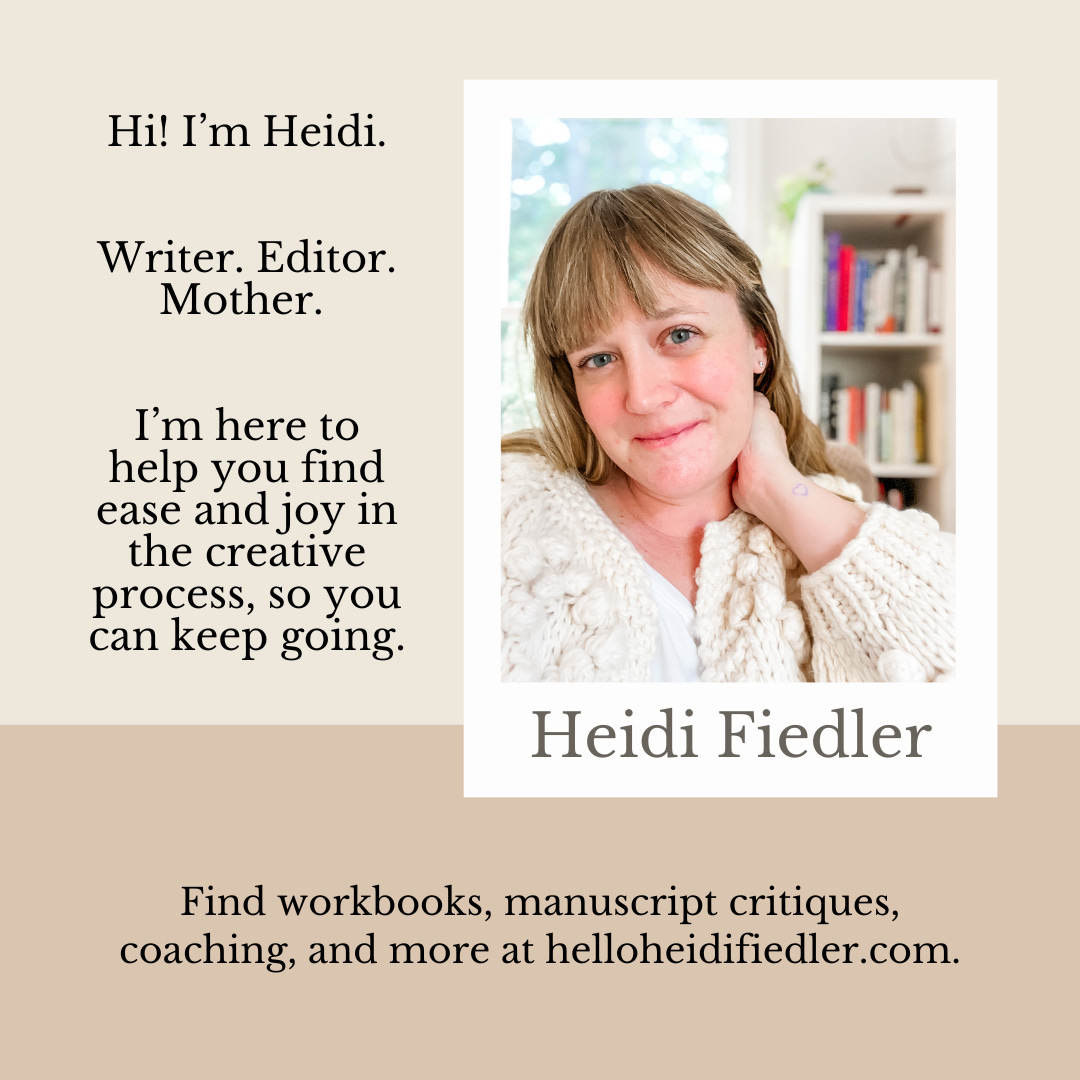

I took ‘The Book of Mistakes’ to class when I was teaching in a scholarship program here in India. It was such a delight. To know how it was made, late at night, brings me joy. And cannot wait to gather friends and experiment with Creature Drawings. 🩷 Thank you Heidi and Corinna